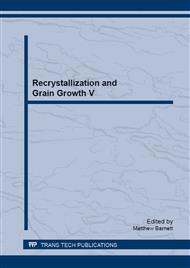p.11
p.17
p.21
p.25
p.31
p.37
p.42
p.46
p.50
The Industrial Application of Microstructure Modelling: A View out of the Process Window
Abstract:
Integrated model based control systems are an essential part of modern plant operations. The production requirements have evolved from achieving geometric tolerances to becoming a large, flexible, but accurate metallurgical instrument. Within the steel industry, on-line process and microstructure monitoring systems have been realised for many years on hot strip mills. At recent conferences (including ReX&GG IV), Siemens has described the successful implementation of these models in steel plate production; in applications where there is increased complexity in through thickness microstructure and the final products have safety critical applications. Even with advanced on-line systems and tailored production routes there is a relatively comfortable process window in modern steel manufacture. For the plant builder, light structural metals titanium and magnesium, and harder nickel based high temperature alloys represent another level of complexity and process control requirements. This paper examines the potential of microstructure modelling with respect to the process design for manufacturing wrought products in alternative alloy systems. Metallurgical aspects will be considered and their practical implications discussed. The continued expansion of these materials into markets where high strength/weight ratios, corrosion resistance or high temperature properties are desirable (e.g. automotive, offshore, chemical, aerospace) make this worthwhile from an industrial perspective.
Info:
Periodical:
Pages:
31-34
Citation:
Online since:
March 2013
Authors:
Keywords:
Price:
Сopyright:
© 2013 Trans Tech Publications Ltd. All Rights Reserved
Share:
Citation:


